Abstract
Antigenic competition was demonstrated in IgE antibody response in mice immunized with ovalbumin or DNP-ovalbumin associated with several non-related proteins: DNP-Ascaris, DNP-keyhole limpet haemocyanin or Ascaris. Simultaneous injection of two antigens caused a suppression of IgE antibody production to the test antigen, IgG1 antibody formation being only diminished under certain conditions. Competition was dose-dependent and effective only in the primary response. However, the secondary response could be also partially suppressed if the competitor antigen was given in both first and second antigenic stimulation. Competition was abolished by irradiation prior to immunization.
Full text
PDF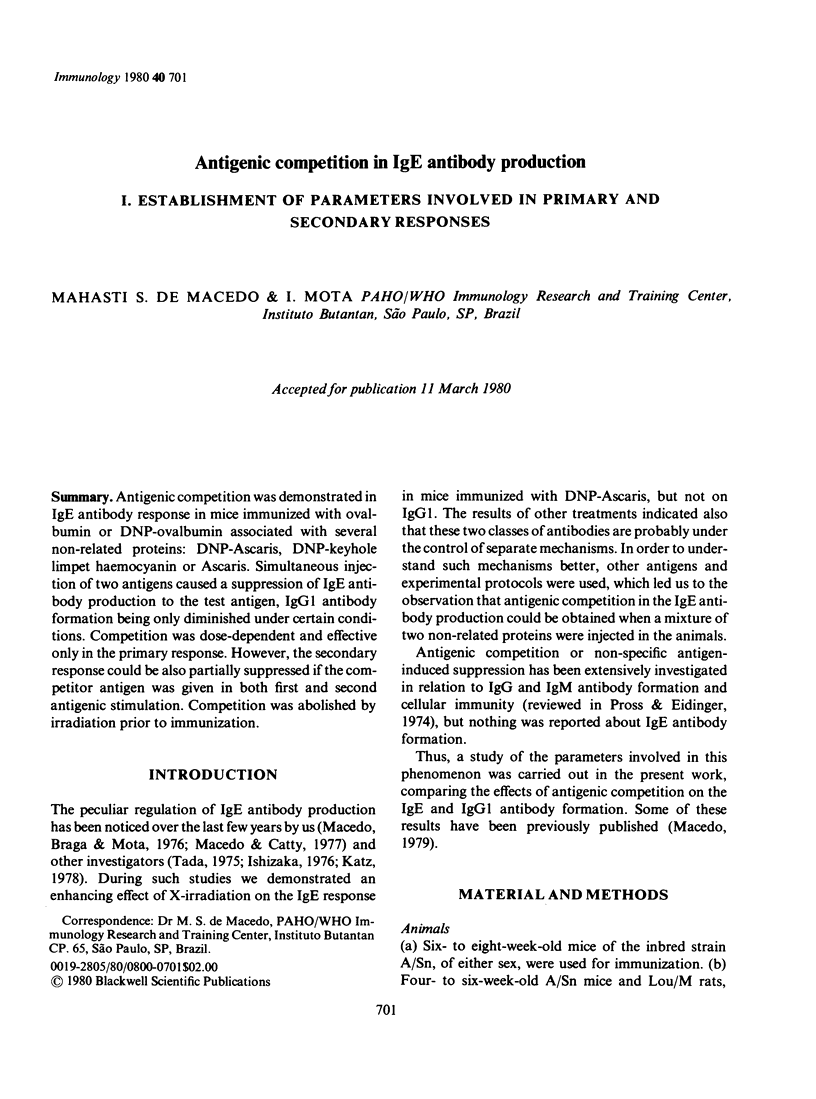
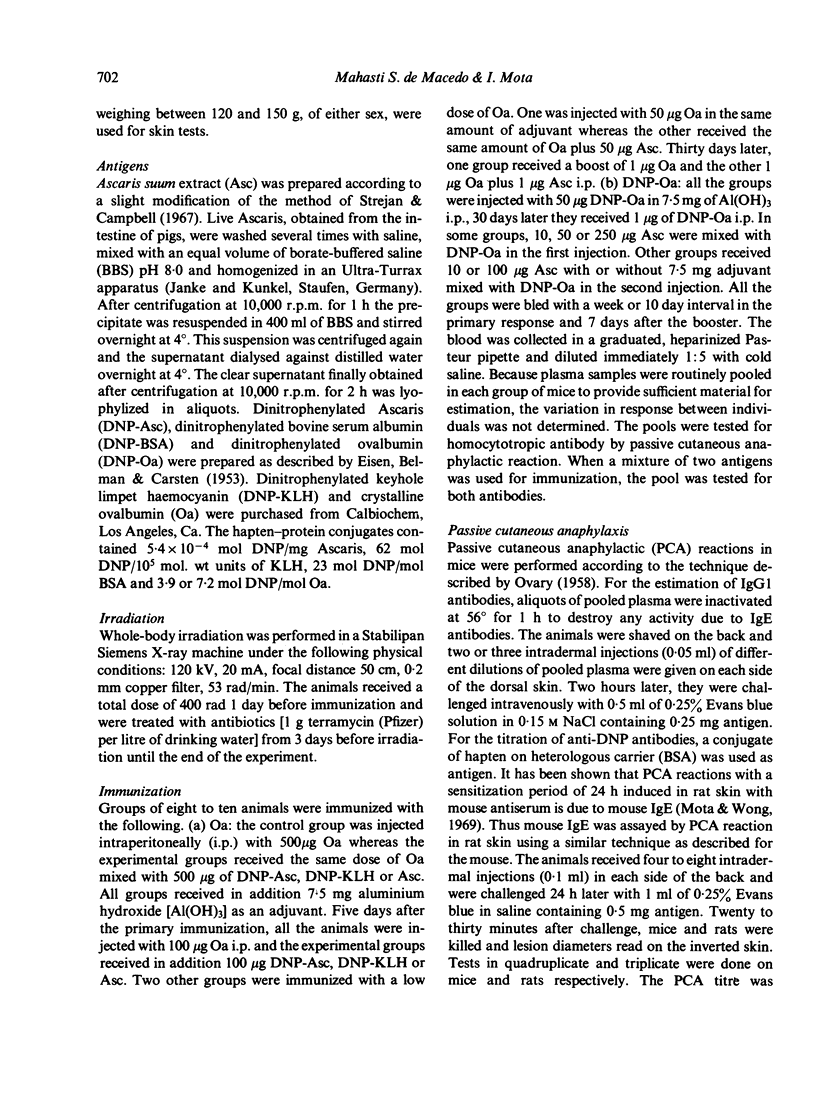
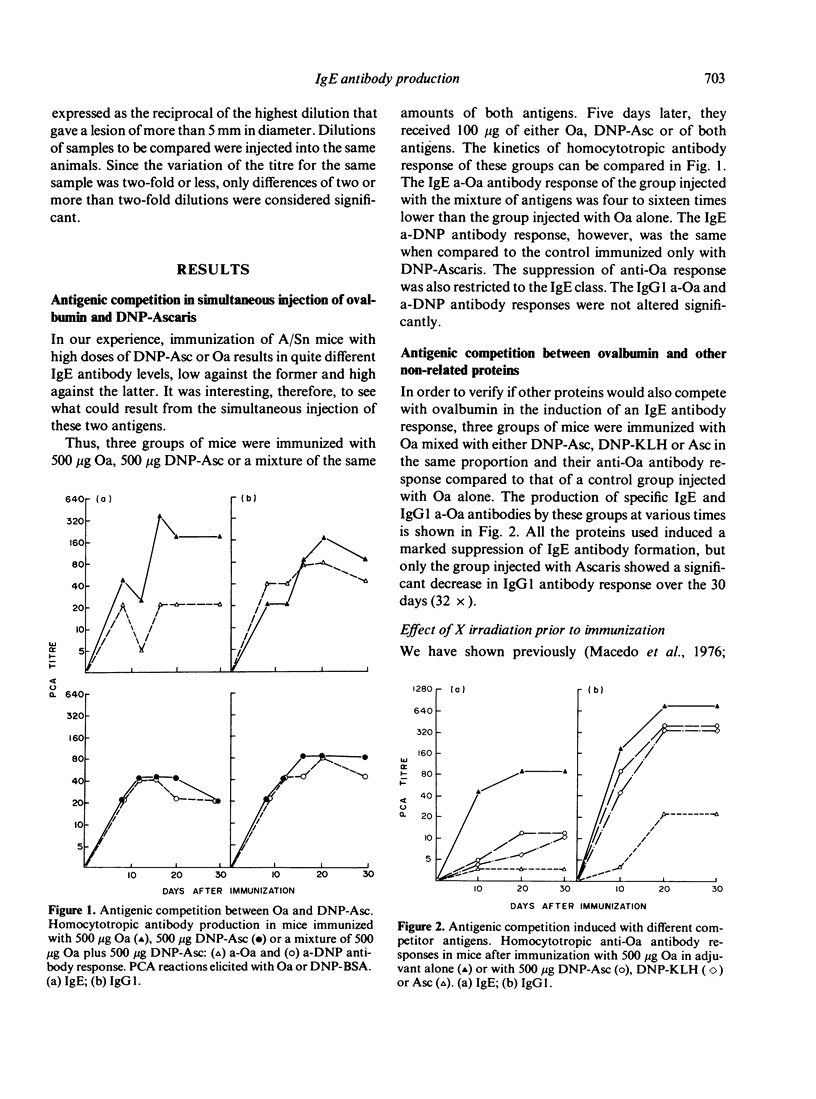
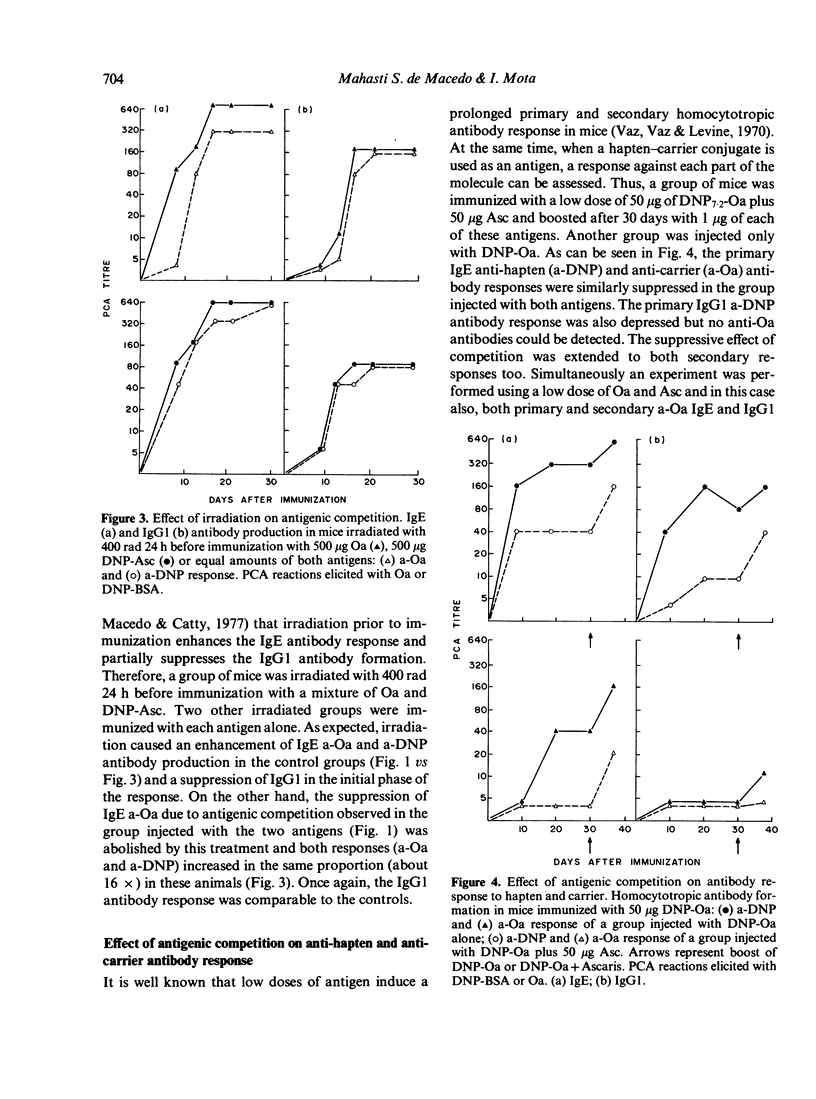
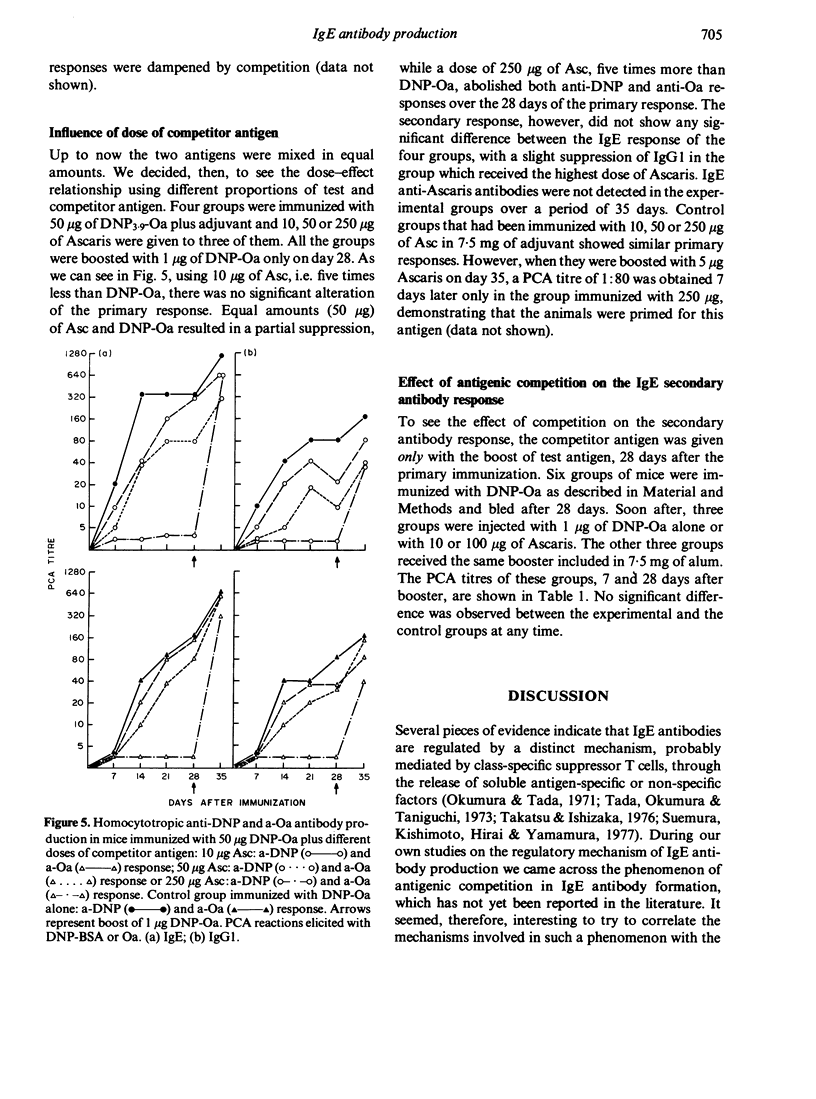
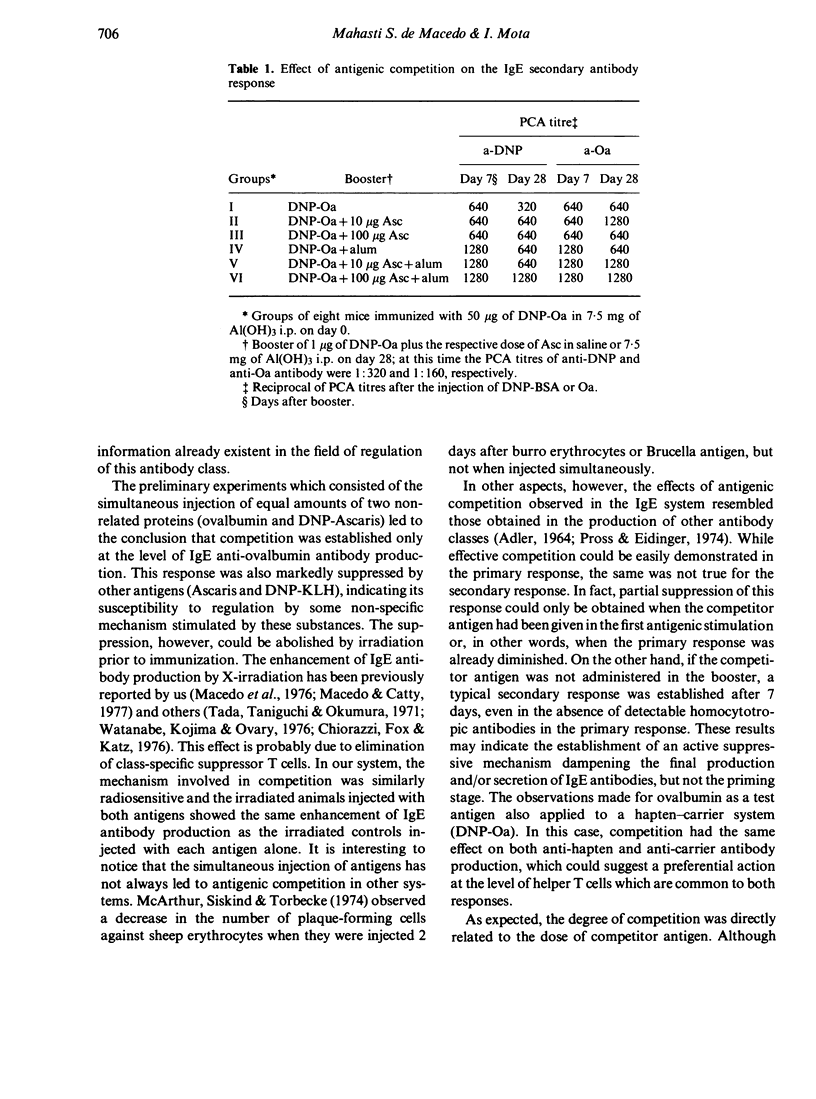
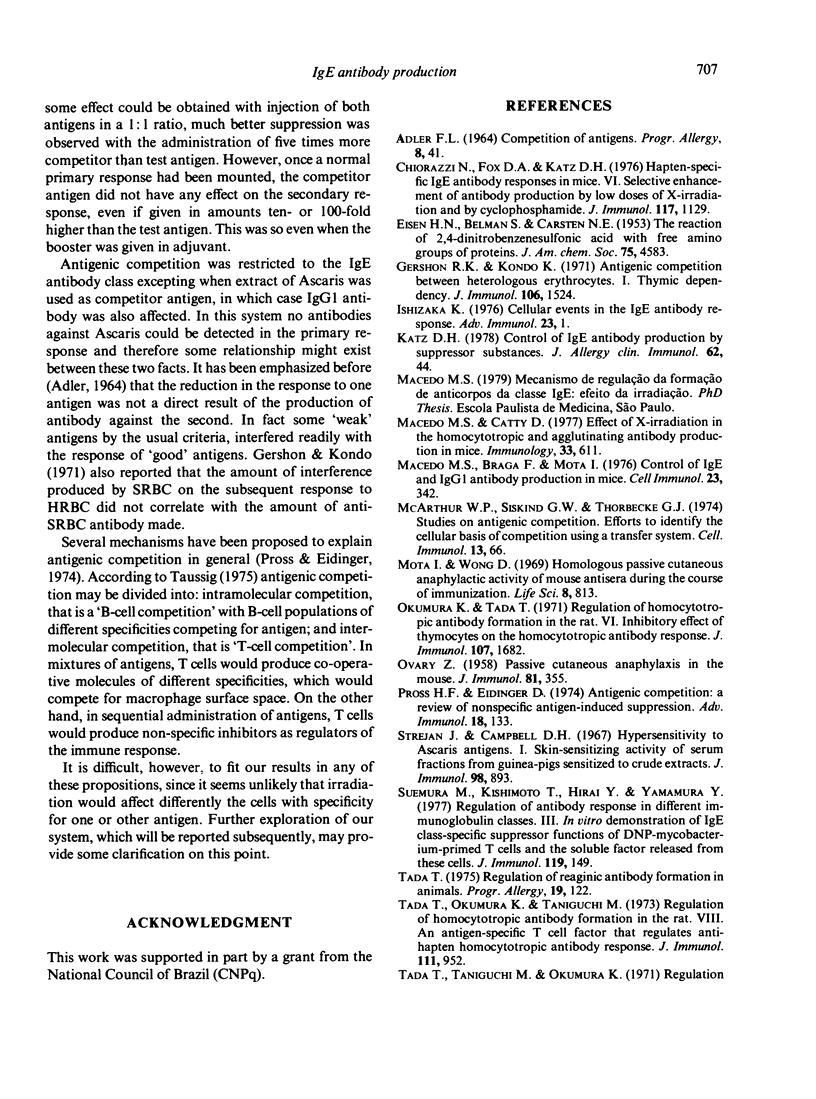
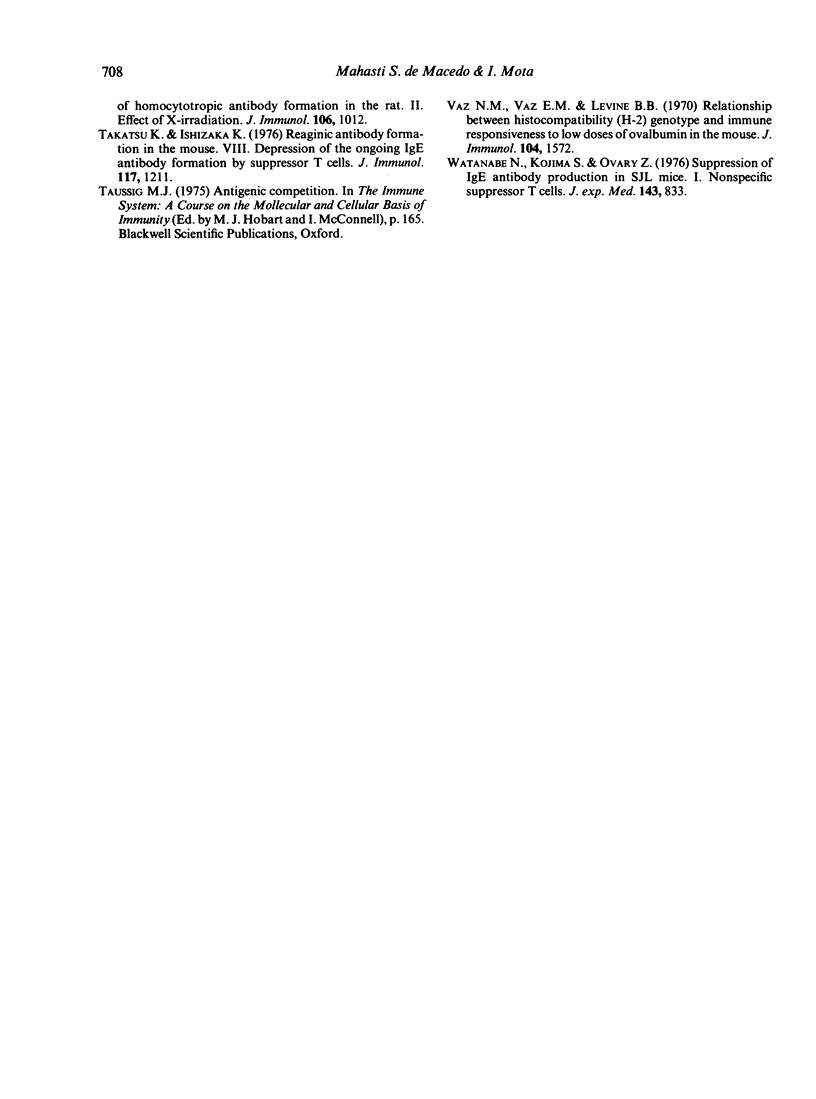
Selected References
These references are in PubMed. This may not be the complete list of references from this article.
- De Macedo M. S., Catty D. Effect of X irradiation on homocytotropic and agglutinating antibody production in mice. Immunology. 1977 Nov;33(5):611–619. [PMC free article] [PubMed] [Google Scholar]
- Gershon R. K., Kondo K. Antigenic competition between heterologous erythrocytes. I. Thymic dependency. J Immunol. 1971 Jun;106(6):1524–1531. [PubMed] [Google Scholar]
- Ishizaka K. Cellular events in the IgE antibody response. Adv Immunol. 1976;23:1–75. doi: 10.1016/s0065-2776(08)60318-1. [DOI] [PubMed] [Google Scholar]
- Katz D. H. Control of IgE antibody production by suppressor substances. J Allergy Clin Immunol. 1978 Jul;62(1):44–55. doi: 10.1016/0091-6749(78)90072-6. [DOI] [PubMed] [Google Scholar]
- McArthur W. P., Siskind G. W., Thorbecke G. J. Studies on antigenic competition. Efforts to identify the cellular basis of competition using a cell transfer system. Cell Immunol. 1974 Jul;13(1):66–75. doi: 10.1016/0008-8749(74)90227-5. [DOI] [PubMed] [Google Scholar]
- Mota I., Wong D. Homologous and heterologous passive cutaneous anaphylactic activity of mouse antisera during the course of immunization. Life Sci. 1969 Aug 15;8(16):813–820. doi: 10.1016/0024-3205(69)90099-x. [DOI] [PubMed] [Google Scholar]
- OVARY Z. Passive cutaneous anaphylaxis in the mouse. J Immunol. 1958 Oct;81(4):355–357. [PubMed] [Google Scholar]
- Okumura K., Tada T. Regulation of homocytotropic antibody formation in the rat. VI. Inhibitory effect of thymocytes on the homocytotropic antibody response. J Immunol. 1971 Dec;107(6):1682–1689. [PubMed] [Google Scholar]
- Pross H. F., Eidinger D. Antigenic competition: a review of nonspecific antigen-induced suppression. Adv Immunol. 1974;18:133–168. doi: 10.1016/s0065-2776(08)60309-0. [DOI] [PubMed] [Google Scholar]
- Strejan G., Campbell D. H. Hypersensitivity to Ascaris antigens. I. Skin-sensitizing activity of serum fractions from guinea pigs sensitized to crude extracts. J Immunol. 1967 May;98(5):893–900. [PubMed] [Google Scholar]
- Suemura M., Kishimoto T., Hirai Y., Yamamura Y. Regulation of antibody response in different immunoglobulin classes. III. In vitro demonstration of "IgE class-specific" suppressor functions of DNP-mycobacterium-primed T cells and the soluble factor released from these cells. J Immunol. 1977 Jul;119(1):149–155. [PubMed] [Google Scholar]
- Tada T., Okumura K., Taniguchi M. Regulation of homocytotropic antibody formation in the rat. 8. An antigen-specific T cell factor that regulates anti-hapten homocytotropic antibody response. J Immunol. 1973 Sep;111(3):952–961. [PubMed] [Google Scholar]
- Tada T. Regulation of reaginic antibody formation in animals. Prog Allergy. 1975;19:122–194. [PubMed] [Google Scholar]
- Tada T., Taniguchi M., Okumura K. Regulation of homocytotropic antibody formation in the rat. II. Effect of X-irradiation. J Immunol. 1971 Apr;106(4):1012–1018. [PubMed] [Google Scholar]
- Takatsu K., Ishizaka K. Reaginic antibody formation in the mouse. VII. Depression of the ongoing IgE antibody formation by suppressor T cells. J Immunol. 1976 Oct;117(4):1211–1218. [PubMed] [Google Scholar]
- Vaz N. M., Vaz E. M., Levine B. B. Relationship between histocompatibility (H-2) genotype and immune responsiveness to low doses of ovalbumin in the mouse. J Immunol. 1970 Jun;104(6):1572–1574. [PubMed] [Google Scholar]
- Watanabe N., Kojima S., Ovary Z. Suppression of IgE antibody production in SJL mice. I. Nonspecific suppressor T cells. J Exp Med. 1976 Apr 1;143(4):833–845. doi: 10.1084/jem.143.4.833. [DOI] [PMC free article] [PubMed] [Google Scholar]
- de Macedo M. S., Braga F., Mota I. Control of IgE and IgG1 antibody production in mice. Cell Immunol. 1976 May;23(2):342–355. doi: 10.1016/0008-8749(76)90199-4. [DOI] [PubMed] [Google Scholar]


